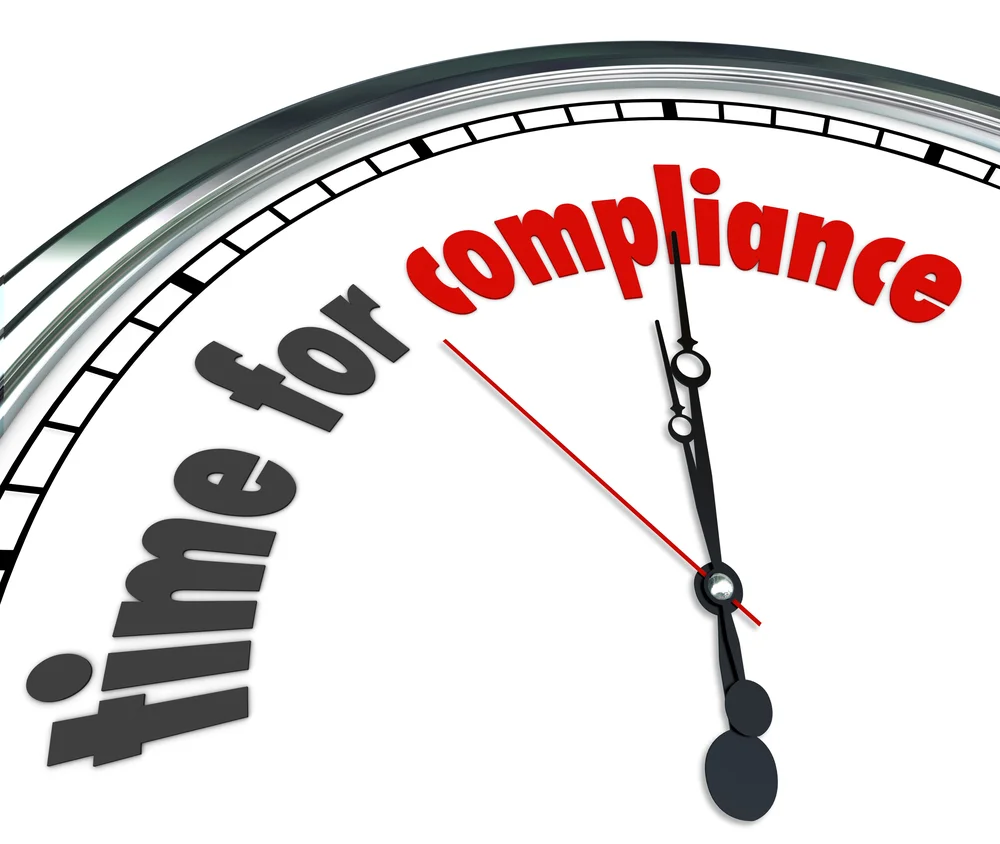
By clicking “Accept”, you agree to the use of cookies on your device in accordance with our Privacy and Cookie policies
Continuously improve upon the security program while continuing to grow the business.
Compyl works with the technology your organization works with.
Begin building a scalable security program.
Build and maintain a robust risk management process.
Manage vendor due diligence and risk assessments.
Mature your security program quickly.
Create and centralize policies, standards, and procedures.
Securely store and monitor all contracts.
Streamline security with automated efficiencies.
Establish and monitor permissions for all users.
Catalog, access, and track all IT Assets.
Demonstrate the ability to effectively safeguard customer data's security, integrity, confidentiality, and privacy.
Prove the strength of your Information Security Management System to prospects and customers worldwide.
Organizations handling health information need to have measures in place & follow them.
Improve the security posture of information systems used within the federal government.
Guidelines to encourage best practices among financial institutions in Singapore.
This global security and privacy framework provides comprehensive information, risk, and regulatory protection.
We proactively monitor for the latest frameworks to ensure our customers environments remain secure at all times. Contact us and learn about the additional frameworks Compyl supports.
Let Us Guide You Through Your InfoSec & Compliance Journey.
Learn how to use the Compyl Platform.
Watch all Security Session Episodes
Real-world stories on how we help our customers.
Our mission and purpose are unique, just like the solution we created.
We are very serious about our security. See the measures we take.
Join our diverse team of intelligent, respectful, and passionate individuals.
We are ready to secure your organization today!
Governance, risk, and compliance are the three pillars of a robust cyber security framework. While people often reference that statement, what does GRC stand for?
While the GRC meaning is straightforward, it is not enough to lean on platitudes; as a business owner, you must understand how each element plays into a company’s digital strategy and how they combine to create an environment of reduced threats and improved reputation.

GRC stands for governance, risk, and compliance. These three interconnected elements form a comprehensive framework that helps organizations manage cybersecurity effectively, streamline decision-making, and ensure adherence to regulatory standards.
Governance in cybersecurity refers to the overarching framework of leadership, policies, and accountability structures that guide an organization’s approach to managing cyber risks. It involves establishing a clear cybersecurity strategy aligned with the organization’s business objectives and defining roles and responsibilities for cybersecurity decision-making.
Strong governance also includes developing comprehensive security policies, implementing incident response and resource allocation procedures, and conducting regular risk assessments to identify vulnerabilities. Proactive measures like employee security awareness training are also a crucial component of effective governance.
Risk management is the cornerstone of a proactive cybersecurity strategy. It encompasses the ongoing processes of identifying, analyzing, evaluating, and addressing cybersecurity threats and vulnerabilities within an organization. A thorough risk management program helps organizations prioritize their security efforts by understanding the likelihood and potential impact of different cyber threats.
The risk management process usually begins with a risk assessment, which involves identifying critical assets, potential threats, and vulnerabilities that attackers can exploit. Risk assessments often use established methodologies and tools to gauge the likelihood and potential severity of different risks. Based on the analysis, organizations can make informed decisions about how to mitigate those risks, whether through implementing security controls, transferring risks through insurance, or accepting those risks within a defined tolerance level.
The C in GRC stands for compliance. In cybersecurity, compliance means adhering to the industry-specific regulations, standards, and laws designed to protect sensitive data. Regulatory compliance is essential for mitigating the risk of data breaches, avoiding hefty fines, and maintaining the trust of customers and stakeholders.
An organization’s specific compliance requirements depend heavily on its industry and the types of data it handles. Some common cybersecurity frameworks include HIPAA (for healthcare organizations), PCI DSS (for businesses that process payment card data, and GDPR (for organizations with customers in the European Union). Each framework mandates security controls, reporting requirements, and procedures for handling sensitive information.

Understanding what GRC stands for can paint a picture that it is only about checking boxes and avoiding penalties, but it is much more than that. A well-implemented GRC program provides tangible benefits for organizations seeking to elevate their cybersecurity posture.
Unlike reactive incident response, a GRC program focuses on a proactive approach to threat mitigation, using continuous risk awareness and improvement. GRC-mandated risk assessments and vulnerability scans often uncover weaknesses that would otherwise remain hidden, allowing for early threat detection. For example, a scan might reveal outdated software with known security flaws.
Additionally, governance processes within a GRC framework establish clear security policies that guide and inform employee behavior and technical security measures. For example, GRC programs might mandate a password policy, specifying character and numeral usage and requiring frequent updates.
Finally, a program’s risk management processes can help an organization make risk-informed investments in security controls. Risk assessments can help a company identify where security controls can yield the highest return.
Understanding what GRC stands for allows business leaders to capitalize on the program. A GRC program improves decision-making processes within an organization by providing a comprehensive data-driven view of cybersecurity risks. The framework encourages a big-picture understanding of an organization’s posture. By evaluating risks across different systems, departments, and compliance requirements, decision-makers gain a 360-degree perspective.
Leaders can make better-informed decisions about security budgets and fund allocations when they understand the risks and their potential impact on a company. For example, advanced threat detection systems are sophisticated and expensive, and most executives are apprehensive about making such an investment without a clear and supported reason. GRC-driven data might help justify the expense by showing the risk of a sophisticated cyber attack is high.
From resource allocation to prioritized investments, a healthy GRC program ensures that security decisions align with business objectives. Governance and data-driven decisions help prevent siloed or isolated decisions, ensuring resources go towards the most critical assets and operations.

The acronym GRC stands for more than its primary definition would suggest. It is more than three words. GRC is a process of oversight, vision, and reputational care. A robust program or strategy streamlines regulatory compliance to reduce risks of costly penalties and reputational damage.
Through well-defined cybersecurity policies and procedures, GRC provides a structured approach that prevents accidental oversights and adheres to regulatory standards. Through continuous monitoring and risk assessments, a program helps organizations identify gaps in security practices and illuminates specific technical and administrative controls that can correct the issues.
GRC programs promote meticulous documentation and reporting on security measures, risk assessments, and incident response procedures. This comprehensive record-keeping makes it easier to provide necessary information during audits, relieving stress and administrative burden associated with demonstrating compliance. A digital compliance platform can help with a GRC program and the ease of documentation.
Every aspect of a well-formed GRC program helps reduce risks and protect corporate and brand reputation. A well-governed and managed cybersecurity program minimizes the threat of data breaches while ensuring the safety of sensitive information.
So, what does GRC stand for? It stands for governance, risk, and compliance but encapsulates so much more. A GRC program is a proactive way of looking at cybersecurity and regulatory demands. It is complex, and businesses often need help with implementation.Compyl is a security and compliance automation platform that can help organizations aggregate data and automate processes. We can provide continuous monitoring and reporting and offer assistance with audit preparation. Request a demo for a hands-on experience or to learn more about the platform.